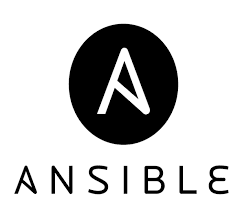Git essentials: start controlling the Git version-Devops
Git essentials: start controlling the Git version-Devops
Discover how Git manages the versions and how to
install the necessary software to access Git servers where your software
program will be stored
Concepts of version control
To understand Git and the concept of
controlling variations, it's useful to look at the control of versions from a
historical point of view. There are three generations of software for version
control.
First generation
The first generation was very simple. Developers worked on the same physical system and "checked" one file at the same time.This generation of software version control software used a technique called file locking. Once the developer checked the file, it was blocked, so no other developer was able to edit the file. Figure 1 shows the concept of this type of upgrade.
 |
| Figure 1 : first-generation control software |
Examples of first-generation control software include the Audit Monitoring System (RCS) and the Source Code Control System (SCCS).
Second generation
First-generation problems include the following:
- Only one developer can work on one file at the same time. This results in a bottleneck in the development process.
- Developers must log in directly to a system that contains software for version control.
- These issues have been solved in the second generation version control software.
 |
| Figure 2 Second version of the software |
Examples of another version of the software for version control include the system of concurrent versions (CVS) and Subversion.
Third generation
The third generation is known as distributed distribution system (DVCS). As with the second generation, the central storage server contains all the files in the project. However, developers do not review individual storage files. Instead, it checks the whole project, which allows the developer to work on the entire set of files, rather than just individual files. Figure 3 shows the concept of this type of version control.In phase 1 in Figure 4, two developers examine a file based on the third version. In stage 2, the developer checks this file, resulting in version 4 of the file.
 |
| Figure 3 Third Version of the software |
In the third stage, the other developer must first combine the changes from his verified copy with the variations in Version 4 (and, possibly, the other version). Once the merger is complete, the new version can be sent to the repository as version 5.Phases 1 and 2 are the same as those shown in Figure 4. However, note that the second phase of registration in phase 3 causes a Version 5 file that is not based on Version 4 is independent of Version 4. In step 4 of the procedure, versions 4 and 5 were combined to create version 6.Although this process is more complex (and, potentially, much more complicated if it has a large number of developers), it offers some advantages in one single line of development:
- Developers can make regular changes to their changes and must not worry about merging until later.
- The aggregation process could be passed on to a particular developer who has a better idea of the project or complete code than other developers.
- The administrator can always return to the project and see exactly what the work was done by a developer.
Of course there is an argument for both methods. However, remember that this article focuses on Git, which uses the method with an acyclic-targeted graph of three variants of version control systems.
Installation Git
You can already have a Git in the system, because it is sometimes installed by default (or it may have been installed by another administrator). If you have access to the system as a regular user, you can run the following command to find out if you have Git installed:
ocs @ ubuntu: ~ $ to git
/ usr / bin / git
If Git is installed, the path to the git command is provided, as shown in the previous command. If it is not installed, then you do not get an exit or an error, such as the following:
Concepts and functions Git
One of the challenges in using Git is to simply understand the concepts behind it. If you do not understand the concepts, then all the commands look just like black magic. This section focuses on the end.
To getting expect
level training for DevOPS Training in your location Devops training in chennai | DevOps training in bangalore | DevOps training in pune | DevOps online training | Devops training in
velachery | Devops training in
annanagar | Devops Training in
Chennai | Devops Training in
Bangalore |Devops training in
sholinganallur | Devops training
in marathahalli



Comments
Post a Comment